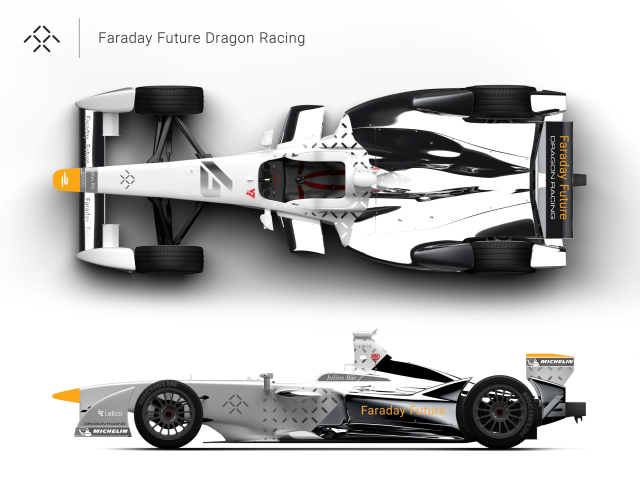
Friday morning, officials from electric car startup Faraday Future and American auto racing team Dragon Racing announced a technical partnership to get Dragon Racing through the next four Formula E race series. The partnership begins with Formula E’s third series, which starts October 9, 2016.
In a press conference in London just before Formula E’s ePrix competition, Dragon Racing Team Owner and Team Principal Jay Penske said his team was looking forward to taking advantage of Faraday Future’s intellectual property. Penske cited the startup’s Los Angeles-based team of more than 1,000 people and its portfolio of more than 320 patents.Faraday Future has attracted some attention as a potential competitor to Tesla as a from-scratch luxury electric vehicle designer. The company revealed a concept car at Las Vegas’ Consumer Electronics Show this year, but since then it has provided scant news of what an actual production vehicle would look like. The lack of reveals has drawn criticism regarding whether Faraday can actually compete against companies like Tesla, GM, and Nissan that have already been producing road-ready electric vehicles for years.
On top of that, Faraday drew suspicion in December when its parent company, Chinese Internet TV and smart-gadget purveyor LeEco, halted share trading in China. This caused Nevada’s state treasurer to take an emergency trip overseas to confirm that the company had the money to carry out its plans to build a massive factory within the state. That money did exist, and Faraday Future broke ground on the Nevada Factory earlier this year.
But this partnership with Dragon Racing suggests that Faraday Future’s current priority is gaining ground on its competitors through software, which would explain why the actual shape of a Faraday Future production vehicle has been so elusive. The startup has said it wants to have an electric car in production by 2018, and in the comments of the YouTube livestream of today’s press conference, a Faraday Future spokesperson responded to criticism from people who thought that today’s surprise announcement would contain more specs and fewer partnership pronouncements. “We plan to release our first production vehicle as soon as possible—however, quality and safety remain our absolute highest priority,” the Faraday Future spokesperson said. “Our flagship vehicle will not be cheaper than $30,000 USD. However, our subsequent vehicles will be more widely available and offer a variety of ownership models.”
Ding Lei, a LeEco executive, told reporters at today's event that his company had a deep partnership with Faraday Future in terms of manufacturing and connectivity and that LeEco is looking to work with the startup on autonomous applications.
During the press conference, Penske noted that Dragon finished second in the championship for Formula E’s first season. “Our big focus now is on software, and we believe our team at Faraday will be a huge help,” the team director said.
In a press release from Faraday Future, the company outlined where it would focus its efforts in improving Dragon Racing’s vehicles. In the upcoming third series, the company said, “Faraday Future’s R&D team will look for opportunities within the Dragon Racing platform to improve overall drivetrain performance. Additionally, they will refine data acquisition and analytics to improve vehicle simulation models, which will aid in more accurate predictions of vehicle performance and efficiency.”
In subsequent racing series, the two companies will outfit each race car with “Faraday Future motors, gearbox, and the FF Echelon Inverter—the same inverter that will be installed into every future Faraday Future production vehicle,” according to the company’s press release.
Formula E racing is just finishing its second season, and the series has been met with both excitement and skepticism. The race is entirely electric and has been lauded as a way to recast electric vehicles’ image to be as cool as gas-based races. But the challenge of electric racing has led to compromises that rattled some racing purists—in the first Formula E series, for example, drivers were outfitted with two separate cars, so when the first ran out of battery life, the second could finish the race.
reader comments
20